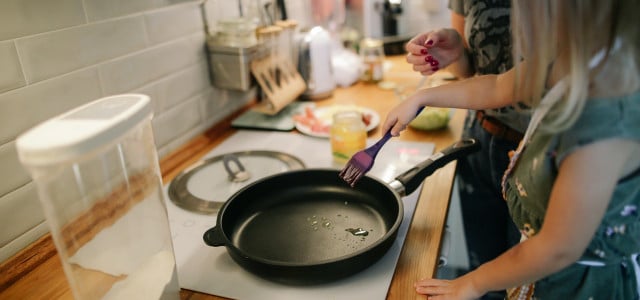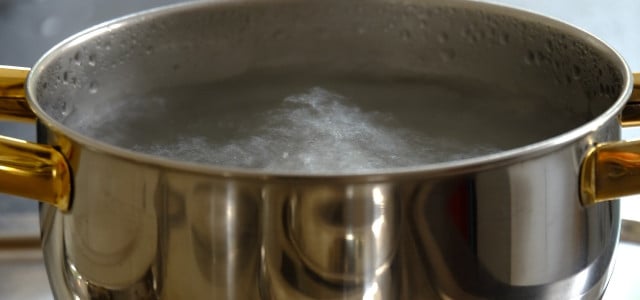A possible friend in the kitchen, but what should you do if you have a scratched non-stick pan? Is it harmful? We explore whether to use it, fix it, or throw it away.
Many of us have a favorite pan, even if we don’t admit it. Perhaps it is one of the non-stick variety, no longer causing us to scrape pancakes off the bottom, or soak for hours to clean. However, we can get very attached to our favorite things, and like anything else, we may keep them for a long time, even when they are perhaps in need of attention or replacement.
If you have been using your nonstick pan a lot, over time, are storing it with other pans on the top, or have used metal or other abrasive products on it, then you should be looking at its condition. Why exactly?
Non-stick pans are often coated with Teflon. Teflon is the brand name for a chemical coating named polytetrafluoroethylene, or PTFE for short, which was first made in the 1930s. It provides a non-stick surface, now quite commonplace in cookware, and other products to aid with waterproofing. It is especially handy for cookware, so that you can cook with less oil, and food does not attach itself through sheer determination to the surface of your pan.
Teflon can however break down, and this is when there may be slight cause for concern. So what are we looking for, and what may be the hazards of continuing to use a scratched non-stick pan?
Non-Stick Pan: Possible Hazards
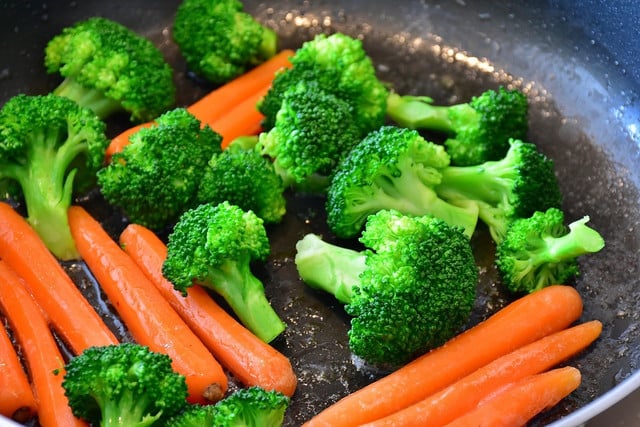


Studies in the toxicity of a chemical called Perfluorooctanoic acid (PFOA), used in older non-stick Teflon pans before PTFE was used, remain mainly inconclusive. There are, however, concerns that high levels of such chemicals may be linked to adverse health conditions like chronic kidney disease, some cancers, infertility, and low birth weight.
Teflon-marketed products have been required to be PFOA free since 2013. If your pan is older than this, it might be high time for a new purchase. In fact, PFOA has been phased out of many other products too, as in 1999, a study suggested that more than 98 percent of people in the US had it in their blood.
There have also been suggestions that inhaling chemicals like PFOA and PTFE, can cause flu-like symptoms, sometimes referred to as Teflon flu.
Post-2013 Teflon-coated cookware is considered safe to use, even if a little damaged, but even in its new guise, Teflon is still a chemical coating, and can chip off when scratched. As well as scratching, it is worth noticing any major discoloration, which may mean the non-stick surface has been damaged.
Scratched Non-Stick Pan: What Should You Do?
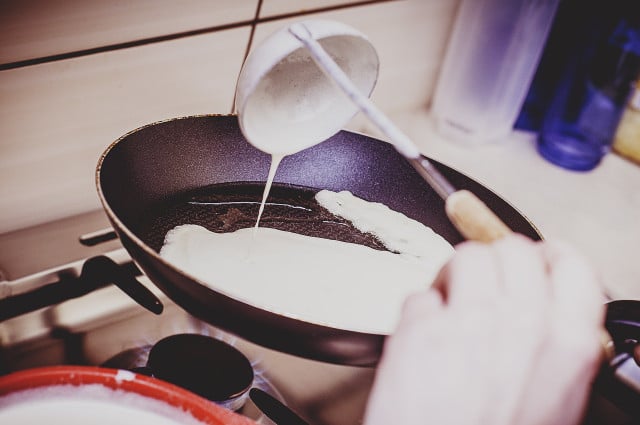


Scratches on an older pan may be a cause for concern. If your pan is compromised, then chemicals may be flaking into your food. We suggest throwing an old (pre-2013 produced) pan away. Other pans can be checked regularly, at least every couple of years, or as a rule of thumb, give them a quick once over every time you put them away or take them out, as scratches can be caused at any time. If the scratches are small and the pan is a newer variety there is the possibility of repair.
Repair your non-stick pan:
There are products available to repair scratches on a non-stick pan, or you can make your own;
Step by step:
- Mix one cup of water, 2 tablespoons of baking soda and ½ a cup of white vinegar.
- Add to your scratched non-stick pan.
- Heat until it boils.
- Leave simmering for ten minutes.
- Remove from heat.
- When cooled to lukewarm, rub vegetable oil onto the pan surface to clean and re-season it.
If using a purchased repair spray:
- Make sure the pan is super clean.
- Allow it time to air dry.
- Spray your pan, according to the instructions on the product, and leave for half an hour.
- Preheat the oven to 500°F for 10 minutes.
- Put the sprayed pan in the oven and leave for 45 minutes (unless instructions say otherwise).
- Turn the oven off, leaving the pan inside, until cool.
- Wash thoroughly, twice, with dishwashing liquid and a soft sponge, before use.
Your non-stick pan may also be under warranty, in which case you can refer to the manufacturer, for re-coating and repair.
Alternatves to Non Stick Pans
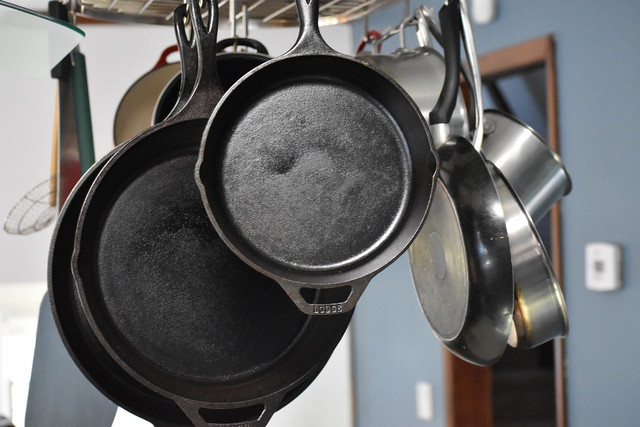


You may wish to avoid non-stick Teflon pans altogether, and opt for something which isn’t coated in possibly toxic chemicals. Here are some suggestions:
- Ceramic-coated: These pans are often very affordable, easy to clean, low maintenance, and don’t react to acidic foods. Like Teflon pans, they also allow you to cook with less fat.
- Cast iron: These pans retain heat well, are also easy to clean and look just as beautiful in the center of a dining table, as on the hob. Cast iron skillets have other benefits, and can be an especially sustainable solution.
- Stainless steel: Such pans are durable and long-lasting, are non-toxic, and ideal for many types of cooking such as boiling, frying and sautéing.
- Ceramic non-stick: Also toxic-free, and lightweight.
- Carbon steel: Heats food quickly, and can be seasoned to make more non-stick.
Conclusion
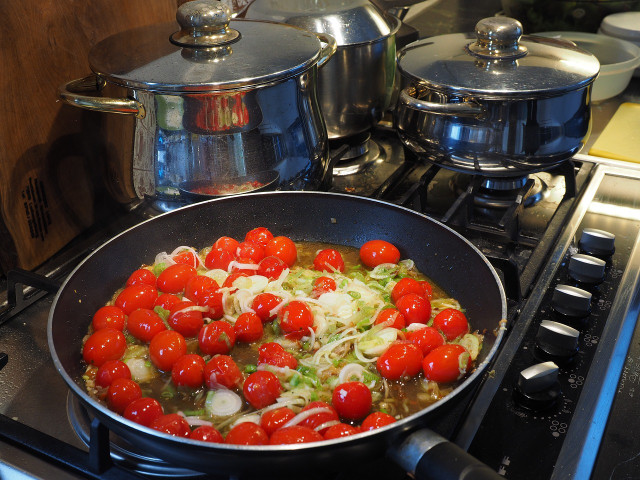


A slightly scratched non-stick Teflon pan may not be a severe health hazard, if produced after 2013, but for peace of mind, it is worth checking your pans and taking action if there are scratches and damage, as chemicals may be leaking into your food. Looking after your pans will also minimize the chance of damage.
Read more:
- How to Clean Copper Pans and Pots Naturally
- Why It’s Not a Good Idea to Put Pans & Pots in the Dishwasher
- How to Remove Scratches from a Glass Stove Top
Important Information regarding Health-related Topics.
** Links to retailers marked with ** or underlined orange are partially partner links: If you buy here, you actively support Utopia.org, because we will receive a small part of the sales proceeds. More info.Do you like this post?







